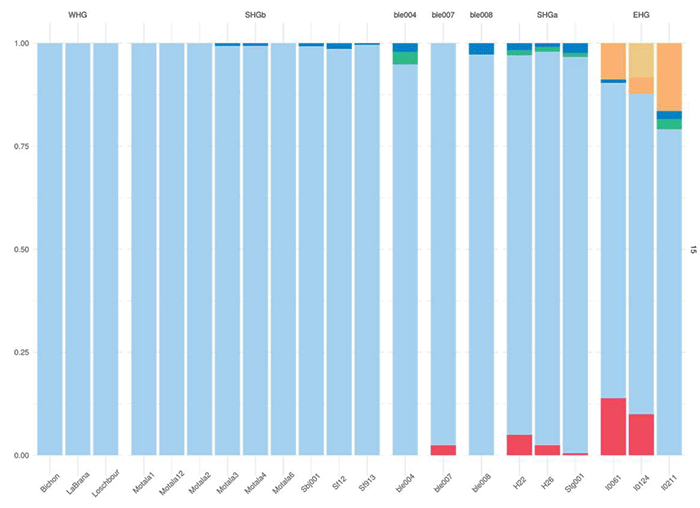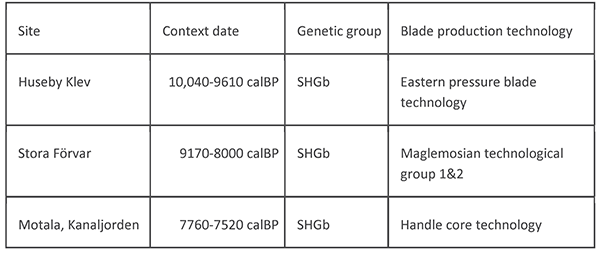New interesting preprint Ancient DNA from chewing gums connects material culture and genetics of Mesolithic hunter-gatherers in Scandinavia, by Kashuba et al. (2018).
Interesting excerpts (emphasis mine):
Mitochondrial genomes from all three individuals belong to the U5a2d haplogroup. (…) The mitochondrial U5a2d haplogroup is consistent with earlier published results for ancient individuals from Scandinavia, U5a being the most common within SHG. Of the 16 Mesolithic individuals from Scandinavia published prior to our study, seven belong to the U5a haplogroup, nine share the U2 and U4 haplogroups
We divided the SHG group into two groups: SHGa and SHGb (ancient individuals found in contemporary Norway and Sweden, respectively). We based this on both the geographical distribution and the previous studies demonstrating the close relation of SHGa to EHG group and SHGb to WHG group. To further explore the demography within the SHG group, we compared the ancestry of BLE individuals within SHGa and SHGb groups. This comparison revealed a high relative shared drift between BLE individuals and the SHGb group

The results from Huseby Kiev allow us to finally connect the SHG group with the eastern pressure blade technology. However, the higher genetic affinity between Huseby Kiev individuals and the WHG group challenges the earlier suggested tie between eastern technology and EHG genetics. Our results suggest either early cultural transmission, or a more complex course of events involving both non- and co-dependent cultural and genetic admixture.
Seeing how culture is indeed usually associated with the expansion of a certain population, especially at such an early date, I guess this similarity with WHG of incoming eastern peoples comes from an originally EHG population expanding into a mainly WHG area in the west (similar to what happens e.g. with Bell Beakers), or being replaced later by a WHG population which adopted the culture (similar to what happened with late Corded Ware populations in central-east Europe after the expansion of Bell Beakers).
Unlike later periods, it will always be difficult to judge such ancient population movements with few samples covering thousands of years… Probably specific Y-DNA haplogroups would help differentiate between both expanding populations from east and west.
